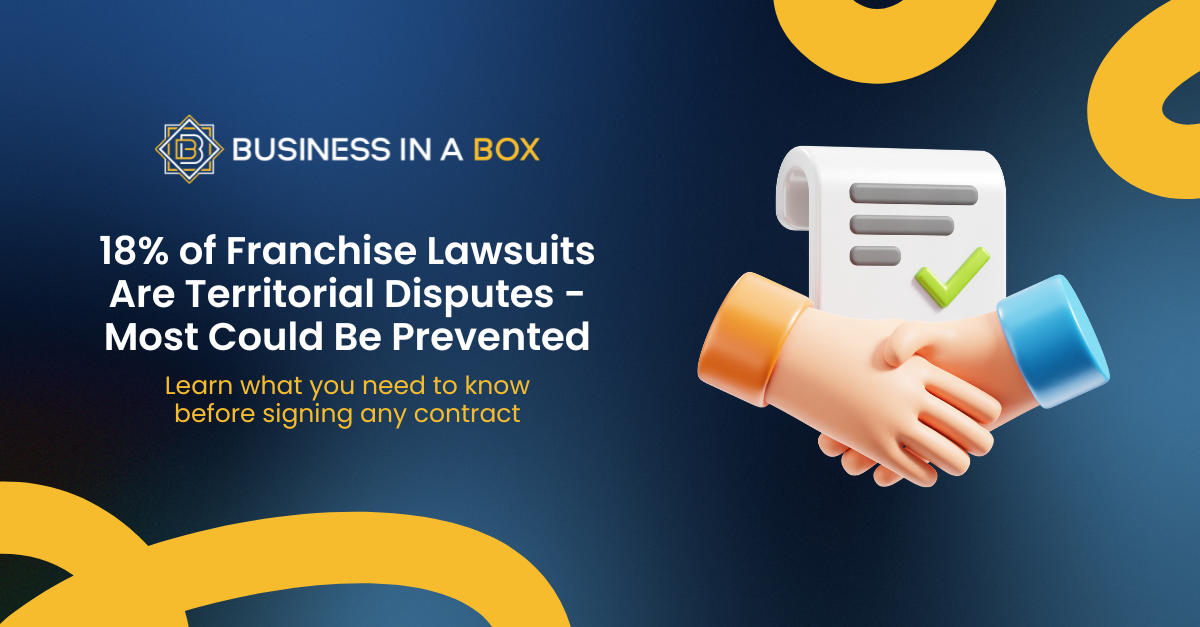When you buy a franchise, you’re not just purchasing a business model. You’re buying the right to operate within a specific market area. Understanding the framework behind territorial rights could mean the difference between a thriving business and a failed investment.
According to the International Franchise Association, territorial disputes represent 18% of all franchise litigation cases, making this the second most common source of franchisor-franchisee conflict. Yet most new franchisees never fully grasp the mechanics until it’s too late.
What Is Territory in Franchising?
Territory is the defined geographic area where you have rights to operate your franchise. It’s like having a zone where you can serve customers and build your business. But not all territories are created equal.
The Federal Trade Commission requires franchisors to clearly disclose territorial arrangements in Item 12 of the Franchise Disclosure Document (FDD). However, the language can be deceptively complex.
Exclusive territorial rights grant you monopolistic control over a defined area. This means no other franchisee or location can operate within your boundaries. Non-exclusive rights provide operational territory without competitive protection. Case law analysis shows that 67% of territorial disputes involve franchisees who misunderstood non-exclusive limitations.
The difference is crucial. You might receive a territory covering 50,000 people, but if those rights are non-exclusive, the franchisor can open five more locations in that same area tomorrow.
What Is Encroachment?
Encroachment happens when another franchise location opens too close to your territory, potentially taking away your customers. This can occur through new franchise locations, company-owned stores, or even digital competition through delivery apps.
Modern territorial protection must address a challenge that didn’t exist ten years ago: digital overlap. Research from Franchise Business Review indicates that 43% of territorial disputes now involve digital service overlap through delivery apps and online ordering platforms.
Consider this scenario: Your pizza franchise has exclusive rights to a five-mile radius. But a competing location twelve miles away can now deliver to your customers through DoorDash. Your territorial protection becomes meaningless in the digital economy.
How Territory Gets Defined
Traditional geographic boundaries defined by streets or zip codes remain the most legally defensible approach. However, franchisors increasingly use sophisticated methods that can work against franchisees.
Population-based territories assign customer counts within demographic parameters. While Census data integration allows for precise market sizing, these territories can shift dramatically with population changes or new developments.
Drive-time mapping uses geographic information systems (GIS) to define territory based on travel time to your location. This sounds logical until you realize that new roads or traffic changes can effectively shrink your protected area.
What You Must Do Before Signing
Before signing any franchise agreement, conduct market saturation analysis using this formula: Territory Population ÷ Average Customer Base per Location = Saturation Risk Score. Industry benchmarks suggest scores above 2.5 indicate potential oversaturation.
Review your FDD’s Item 12 for specific language including “exclusive,” “protected,” or “non-compete” terminology. Franchise law specialists warn against any qualifiers like “generally,” “approximately,” or “subject to franchisor discretion.”
Cross-reference Items 1 and 2 to identify multi-brand operators who might introduce competing concepts. Many franchisors operate multiple brands that could cannibalize your customer base.
Protection Strategies You Can Negotiate
Smart franchisees don’t just accept standard territorial language. They negotiate GPS-based delivery restrictions, platform-specific territorial controls for apps like Uber Eats, and website geofencing for online ordering systems.
Request development moratoriums for adjacent territories and secure first right of refusal for expansion opportunities. Establish compensation formulas for unavoidable encroachment before problems arise.
Most importantly, use U.S. Census Bureau demographic tools to analyze competitor density and calculate breakeven customer counts for your specific territory.
Why This Matters for Your Investment
Understanding territorial mechanics requires systematic analysis of legal documents, market data, and competitive landscape. Many aspiring franchisees focus entirely on brand recognition and profit projections while ignoring the territorial foundation that supports long-term success.
Territorial rights affect your business value, growth potential, and resale opportunities. Strong territorial protection provides the foundation for sustainable growth. Weak protection creates ongoing competitive pressure that can limit profitability.
The complexity of modern territorial arrangements often requires professional guidance to navigate successfully. Investment in proper territorial analysis upfront prevents costly disputes and protects your franchise investment.
Ready to understand the territorial mechanics that protect your franchise investment?
Book a complimentary call to explore how territorial analysis and protection strategies can guide your franchise selection and ensure your investment remains protected long-term.
Understand the mechanics. Protect your investment.

